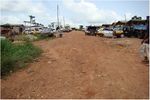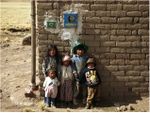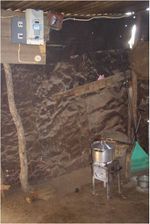Knowledge fuels change - Support energypedia!
For over 10 years, energypedia has been connecting energy experts around the world — helping them share knowledge, learn from each other, and accelerate the global energy transition.
Today, we ask for your support to keep this platform free and accessible to all.
Even a small contribution makes a big difference! If just 10–20% of our 60,000+ monthly visitors donated the equivalent of a cup of coffee — €5 — Energypedia would be fully funded for a whole year.
Is the knowledge you’ve gained through Energypedia this year worth €5 or more?
Your donation keeps the platform running, helps us create new knowledge products, and contributes directly to achieving SDG 7.
Thank you for your support, your donation, big or small, truly matters!
Type of On-Grid Activities
Overview
In many parts of the developing world, access to electricity is low, particularly in rural areas. Often district capitals depend on expensive and often unreliable power generation with diesel generators. Outside these towns, the situation is even worse. The overwhelming majority of rural households, most rural schools, health centres and administrative posts are without access to electricity. Energy solutions must consider this reality and combine extension and densification of the national electricity grid along with the adoption of modern technological solutions and energy services.[1]
Type of Grid Activities
Grid Extension
| Grid extension means to connect the facility to the local utility grid. If a grid system is available, the grid power is typically the most cost effective power supply. Grid extension is therefore a network expansion from the national power transmission system to new areas and communities. The cost of extending lines to rural facilities can be prohibitively expensive. |
Grid Densification
|
New grid connection expecially for households living close to the local utility grid but who are not yet connected. Grid densification divided into two categories[2]:
|
Costs
Connection costs according to the EnDev programme.
|
|
Benin | Ghana | Bolivia | Peru | Mozambique | |
|
Costs/ Connection (€) |
2000 |
5540 |
220-588 |
62 |
90 |
134 |
|
Tariff |
Social tariff |
Social tariff |
Social tariff |
Social tariff |
Social tariff |
Social tariff |
|
Security of energy supply |
Medium |
Medium |
High |
High |
High |
high |
Financial Support
|
|
Benin | Ghana | Bolivia | Peru | Mozambique | |
|
EnDev subsidy |
70% |
99% |
100% |
20% |
22% |
100% |
|
Government |
30% |
0% |
0% |
0% |
0% |
0% |
|
Utility |
0% |
0% |
0% |
0-80% |
0% |
0% |
|
Customer |
0% |
1% |
0% |
0-80% |
78% |
0% |
Additional Support[3]
- Procurement support
- Developing local standards for grid connection
- Facilitating group applications for grid connections
- Training of local electricians for in-house wiring
- Training of consumers in energy use and efficiency
- Ex-ante savings for connection fees
- Introduction of installment payments of the connection fee linked to the electricity bills
Lessons Learned[3]
- Some utilities are not interested in grid densification
- Poor households are often excluded in extension projects
- Some utilities have great difficulties to organize efficient procurement processes causing severe delays
- Free rider effect difficult to avoid (efficient selection process or accept the effect)
- Detailed monitoring is considered a burden and not always implemented
- In several countries power generation capacity cannot keep up withgrid extension
- In rural areas several households are connected to a meter to save the connection fee which can be legal or illegal according to national and local regulation. In some of these case voltage drop can be a severe problem
-> Lessons Learned Category on energypedia
Further Information
- Grid Portal on energypedia
- Grid Extension / Densification Approaches:Community Rural Electrification Programme (CREP), Nepal
- Reducing the Cost of Grid Extension for R ural Electrification, NRECA International, Ltd.
References
- ↑ Energising Development (EnDev) - http://endev.info/content/Main_Page
- ↑ energypedia: https://energypedia.info/wiki/Grid_Extension_vs_Off_grid,_Island_/_Isolated_System#Basic_Definitions
- ↑ 3.0 3.1 Experience from EnDev Project - https://energypedia.info/wiki/Energising_Development_%28EnDev%29






















